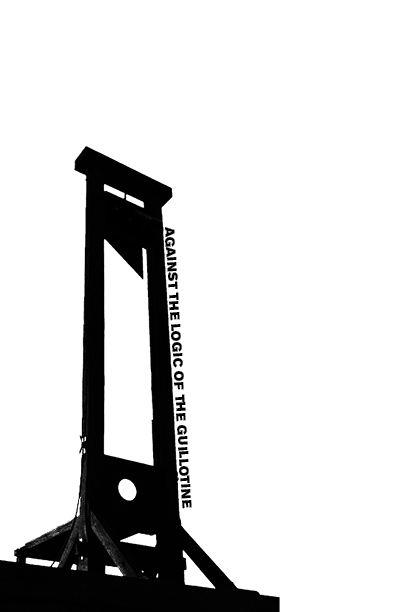For radicals, fetishizing the guillotine is just like fetishizing the state: it means celebrating an instrument of murder that will always be used chiefly against us.
On April 6, 1871, armed participants in the revolutionary Paris Commune seized the guillotine that was stored near the prison in Paris. They brought it to the foot of the statue of Voltaire, where they smashed it into pieces and burned it in a bonfire, to the applause of an immense crowd. This was a popular action arising from the grassroots, not a spectacle coordinated by politicians. At the time, the Commune controlled Paris, which was still inhabited by people of all classes; the French and Prussian armies surrounded the city and were preparing to invade it in order to impose the conservative Republican government of Adolphe Thiers. In these conditions, burning the guillotine was a brave gesture repudiating the Reign of Terror and the idea that positive social change can be achieved by slaughtering people.
“What?” you say, in shock, “The Communards burned the guillotine? Why on earth would they do that? I thought the guillotine was a symbol of liberation!”
Why indeed? If the guillotine is not a symbol of liberation, then why has it become such a standard motif for the radical left over the past few years? Why is the internet replete with guillotine memes? Why does The Coup sing “We got the guillotine, you better run”? The most popular socialist periodical is named Jacobin, after the original proponents of the guillotine. Surely this can’t all be just an ironic sendup of lingering right-wing anxieties about the French Revolution.
The guillotine has come to occupy our collective imagination. In a time when the rifts in our society are widening towards civil war, it represents uncompromising bloody revenge. It represents the idea that the violence of the state could be a good thing if only the right people were in charge.
Those who take their own powerlessness for granted assume that they can promote gruesome revenge fantasies without consequences. But if we are serious about changing the world, we owe it to ourselves to make sure that our proposals are not equally gruesome.
Read the full article here.
